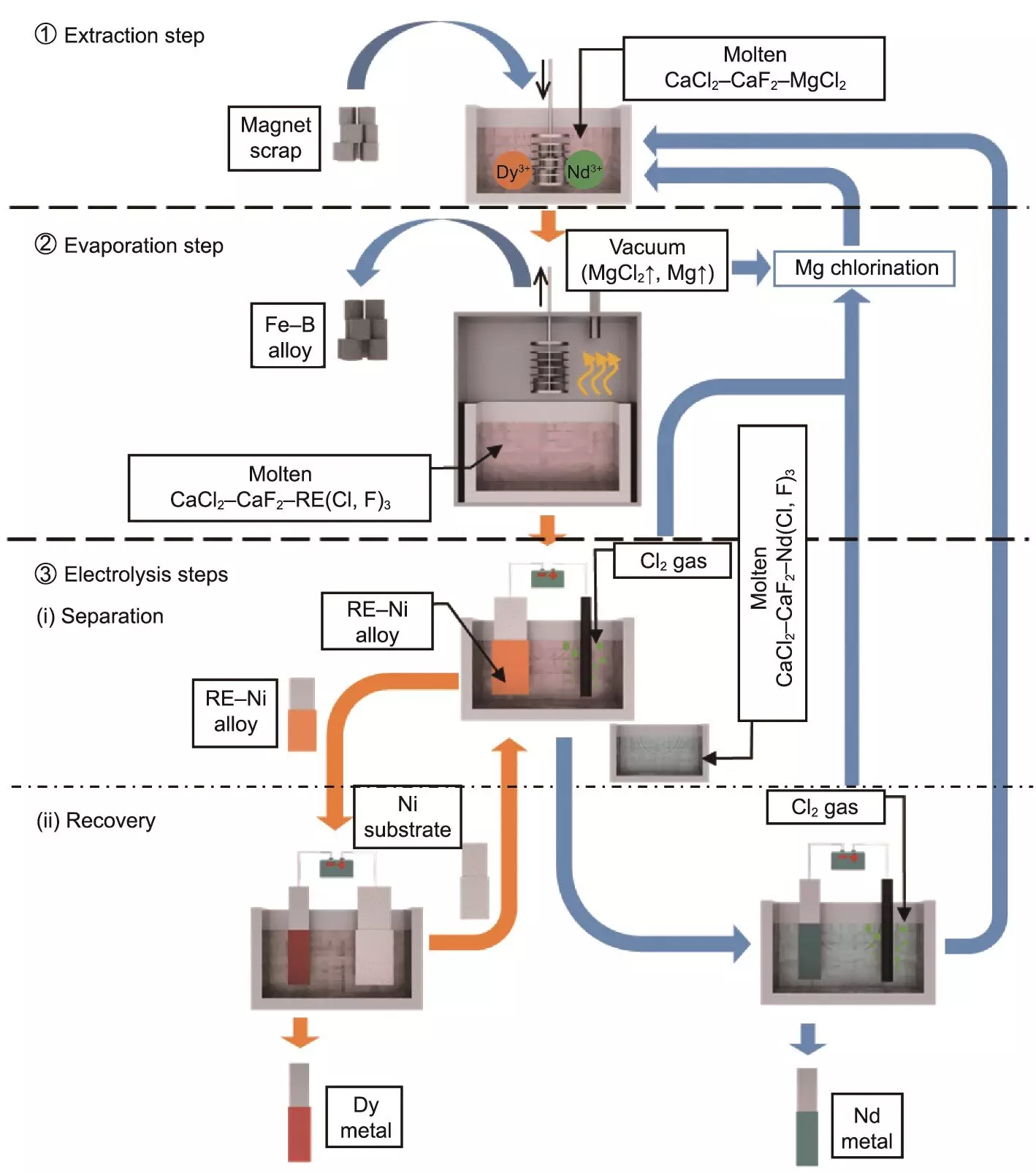In the modern technological landscape, rare-earth elements (REEs) are becoming ever more essential, powering innovations ranging from electric vehicles (EVs) to renewable energy systems such as wind turbines. Among these precious elements, neodymium (Nd) and dysprosium (Dy) stand out for their crucial role in the development of high-performance magnets—an integral component in the push for sustainable technologies. As the global demand for these resources escalates, the imperative to establish efficient recycling methods to reclaim Nd and Dy from end-of-life products has never been more pressing.
Recent groundbreaking research from Kyoto University introduces a transformative approach called selective extraction–evaporation–electrolysis (SEEE). This process, spearheaded by Professor Toshiyuki Nohira and his team at the Institute of Advanced Energy, seeks to provide a robust and eco-friendly alternative to conventional hydrometallurgical techniques typically used for recycling REEs. The SEEE method’s design prioritizes sustainability, efficiency, and precision, aiming to alleviate some of the environmental burdens associated with traditional recycling practices.
The SEEE approach unfolds in a tri-phase manner, providing a systematic and effective strategy for extracting and recovering REEs from magnet scraps.
1. **Selective Extraction**: In this initial phase, a specially formulated molten salt mixture—primarily comprising calcium chloride (CaCl2) and magnesium chloride (MgCl2)—is employed to facilitate the extraction of REEs. The introduction of calcium fluoride (CaF2) plays a crucial role in minimizing evaporation losses, thereby enhancing the overall extraction efficiency.
2. **Selective Evaporation**: Following extraction, the next step involves the dissipation of leftover extraction agents and waste byproducts. This phase is critical as it aims to concentrate the desired REEs for subsequent recovery.
3. **Selective Electrolysis**: The final stage is the electrochemical separation of the extracted REEs, leveraging their unique formation potentials. This innovative electrolysis technique ensures that high-purity Nd and Dy metals are retrieved, boasting recovery rates of 96% for Nd and 91% for Dy, while purities exceed 90%.
The remarkable efficiency of the SEEE process signifies a considerable enhancement over existing recycling methods, which are often fraught with complexity and high energy consumption.
The implications of the SEEE process extend beyond just the recovery of magnet materials. With the burgeoning reliance on renewable energy and electric mobility, the need for reliable and effective recycling solutions becomes imperative. This novel methodology could not only stabilize the supply of REEs but also mitigate the environmental impacts linked to conventional mining activities—an urgent concern given the ecological degradation often associated with resource extraction.
Beyond its initial applications, the adaptability of the SEEE process suggests that it could be employed in diverse sectors, including nuclear fuel reprocessing. This versatility amplifies its potential impact on various environmental fronts, positioning it as an innovative solution to catalyze broader sustainability goals.
While the SEEE process has made promising strides, researchers acknowledge that further technical scrutiny and development are necessary before full industrial integration can occur. Despite these challenges, the initial findings from this research represent a pivotal leap in the quest for effective material recycling and environmental stewardship.
The comprehensive study underscores the significance of advanced scientific research in identifying and developing practical solutions to correspond with global environmental objectives. As nations globally transition towards more sustainable operational models, methodologies like the SEEE process will be vital in addressing the pressing challenges associated with REE recycling. The future may very well hinge on such innovations as industries strive to support a carbon-neutral landscape, making the efforts of researchers more crucial than ever in the global narrative of sustainability.


Leave a Reply